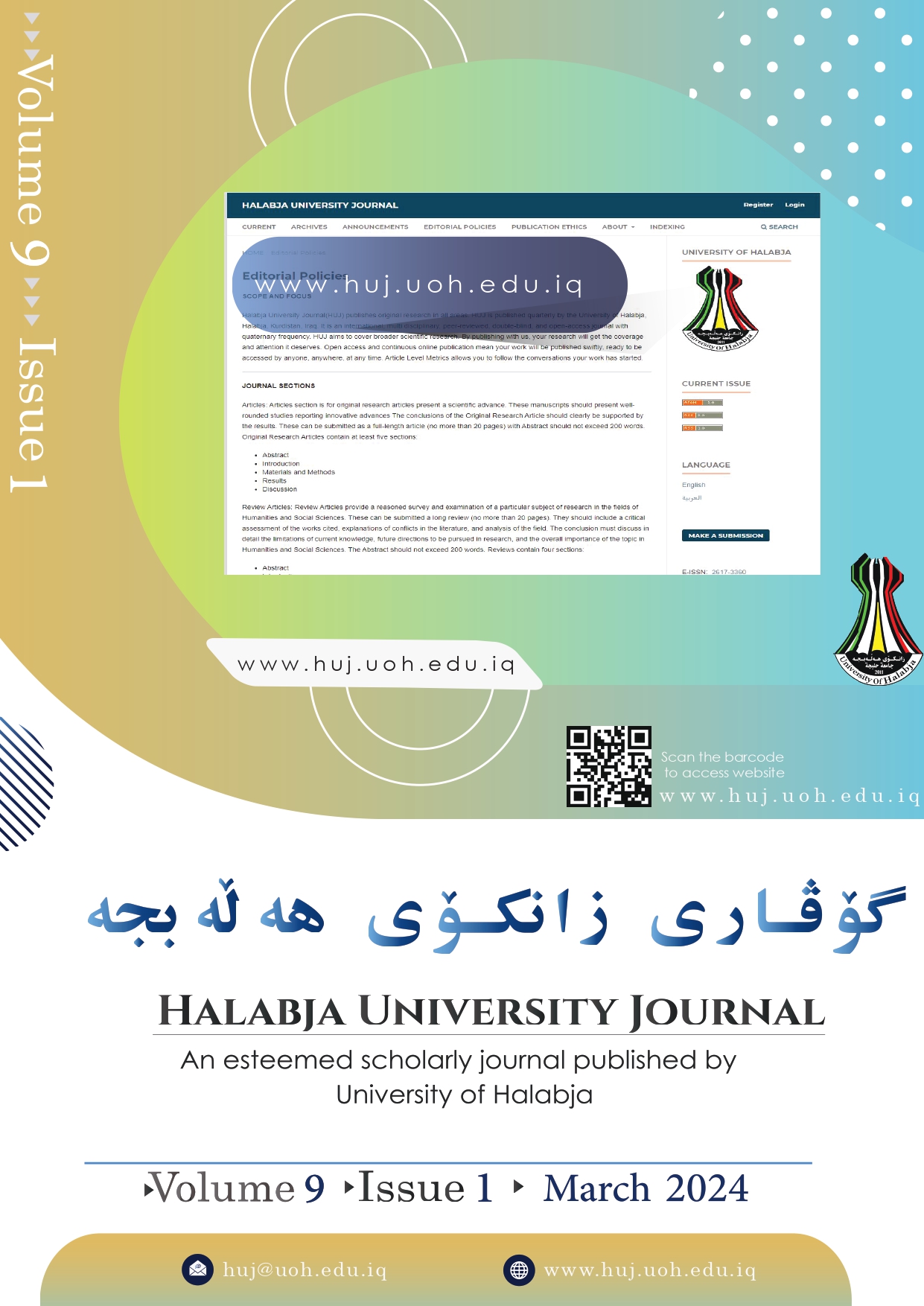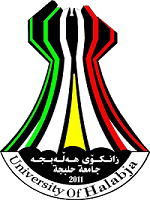Seasonal Monitoring of The Spread of Suspended Aquatic Components In The Water of Lake Dukan Between (2015 - 2020)
DOI:
https://doi.org/10.32410/huj-10526Keywords:
Water Quality, Temporal and Spatial Differences, Satellites, SABI Index, Suspended matterAbstract
The spread of siltation and the growth of suspended water materials in reservoirs such as artificial lakes are among the most common problems in the world. To monitor and detect this problem, some researchers used classical methods of taking water samples, although this method requires spending a lot of time and money. It is worth noting that in this study we used a new technology via the Landsat-8 satellite to monitor the seasonal spread of suspended water components on the surface of Lake Dukan between the years (2015-2020). For this purpose, the Surface Algae Bloom Index , known as (SABI), was applied. This study also attempted to determine the relationship between the amount of rain and temperature with the amount of suspended matter at different depth levels. Considering the results of the study via the satellite used, we concluded that the time and amount of suspended matter spread varies according to the seasons of the year. Therefore, the amount of suspended matter increases in the summer months and reaches (-0.8) due to the lack of rainfall, while in the winter the amount of suspended matter decreases to (0) Due to increased rainfall.
References
Alawadi, F. (2010, October). Detection of surface algal blooms using the newly developed algorithm surface algal bloom index (SABI). In Remote Sensing of the Ocean, Sea Ice, and Large Water Regions 2010 (Vol. 7825, pp. 45-58). SPIE. DOI: https://doi.org/10.1117/12.862096
Chorus, I., & Bartram, J. (1999). Toxic Cyanobacteria in Water: A Guide to their Public Health Consequences, Monitoring and Management. DOI: https://doi.org/10.1201/9781482295061
Codd, G. A., Lindsay, J., Young, F. M., Morrison, L. F., & Metcalf, J. S. (2005). Cyanobacterial toxins. Harmful Cyanobacteria (Huisman J, Matthijs HCP & Visser PM, eds).
Cook, C., & Bakker, K. (2012). Water security: Debating an emerging paradigm. Global environmental change, 22(1), 94-102. DOI: https://doi.org/10.1016/j.gloenvcha.2011.10.011
Keith, D. J. (2010). Estimating chlorophyll conditions in southern New England coastal waters from hyperspectral remote sensing. Remote Sensing of Coastal Environments. CRC Press, Boca Raton, Florida, 151-172. DOI: https://doi.org/10.1201/9781420094428-c7
Schalles, J. F., Gitelson, A. A., Yacobi, Y. Z., & Kroenke, A. E. (1998). Estimation of chlorophyll a from time series measurements of high spectral resolution reflectance in an eutrophic lake. Journal of Phycology, 34(2), 383-390. DOI: https://doi.org/10.1046/j.1529-8817.1998.340383.x
Schwarzenbach, R. P., Egli, T., Hofstetter, T. B., Von Gunten, U., & Wehrli, B. (2010). Global water pollution and human health. Annual review of environment and resources, 35, 109-136. DOI: https://doi.org/10.1146/annurev-environ-100809-125342
Setty, K., Jiménez, A., Willetts, J., Leifels, M., & Bartram, J. (2020). Global water, sanitation and hygiene research priorities and learning challenges under Sustainable Development Goal 6. Development Policy Review, 38(1), 64-84. DOI: https://doi.org/10.1111/dpr.12475
Vaux, J. H. (2001). Water quality (book review). Environment, 43(3), 39-39. DOI: https://doi.org/10.1145/382899.382905
Downloads
Published
Issue
Section
License
Copyright (c) 2024 Ramyar Sabah Ismail, Daban Kadhim Omer Dabbagh, Ribin Samad Abdullah

This work is licensed under a Creative Commons Attribution-NonCommercial-NoDerivatives 4.0 International License.
Authors who publish with this journal agree to the following terms:
- Authors retain copyright and grant the journal right of first publication with the work simultaneously licensed under a Creative Commons Attribution License [CC BY-NC-ND 4.0] that allows others to share the work with an acknowledgment of the work's authorship and initial publication in this journal.
- Authors are able to enter into separate, additional contractual arrangements for the non-exclusive distribution of the journal's published version of the work (e.g., post it to an institutional repository or publish it in a book), with an acknowledgment of its initial publication in this journal.
- Authors are permitted and encouraged to post their work online (e.g., in institutional repositories or on their website) prior to and during the submission process, as it can lead to productive exchanges, as well as earlier and greater citation of published work (See The Effect of Open Access).






